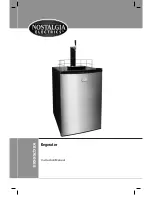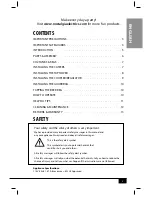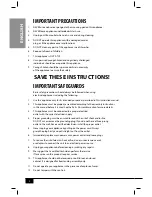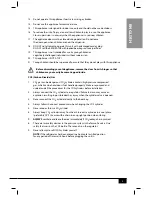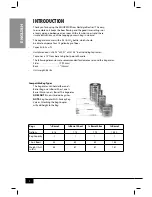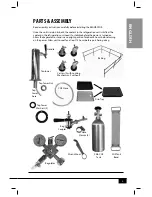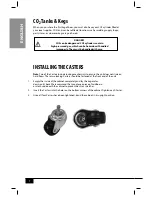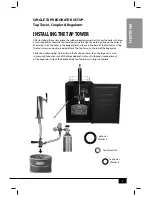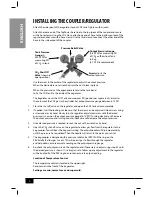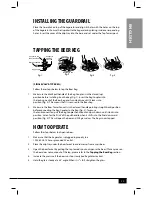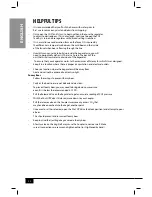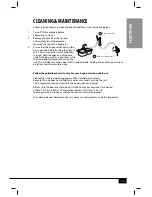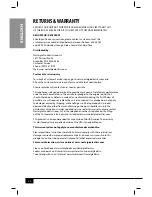
E
N
G
LI
S
H
11
HELPFUL TIPS
•
It is recommended that you flush the hoses with water prior to
first use to remove any dust and debris from shipping.
•
Only open the CO2 Tank ¼ turn to begin with and then use the regulator
to adjust to desired pour. If it is not enough, continue to open the CO2
Tank by ¼ turn and use regulator until desired setting is reached.
•
It is normal to see condensation form on the faucet. It is caused by
the difference in temperature between the cold beer and the inside
of the faucet when beer is flowing through the line.
•
Humidity can cause ice to build up inside the kegorator so you will
need to periodically defrost it. There is a hole in the back of the
unit that will allow water to drain out of the kegorator.
•
To ensure that your kegorator works to the maximum efficiency for which it was designed,
keep it in a location where there is proper air circulation and electrical outlets.
•
Choose a location where the kegorator will be away from
heat and will not be exposed to direct sunlight.
Foamy Beer
Follow these steps to prevent foamy beer:
•
Confirm the beer lines are not kinked and are clean.
To prevent foamy beer, you may need to bring down your pressure,
even if it is below the recommended 8-12 PSI:
•
Pull the Release Valve on the Regulator to get an accurate reading of CO2 pressure.
•
With the Shut Off Valve still closed, move down to your Coupler.
•
Pull the release valve on the Coupler to remove any excess CO2 that
may have been pushed into the keg at another point.
•
Once most or all has released, open the Shut Off Valve (6 o’clock position) and attempt to pour
a beer.
This should prevent and/or correct foamy beer.
•
Keep in mind that jostling a keg can create foamy beer.
•
A faulty valve on the keg itself may cause the Coupler to not seat well. Make
sure all connections are secure and tightened (not just tightened by hand).


